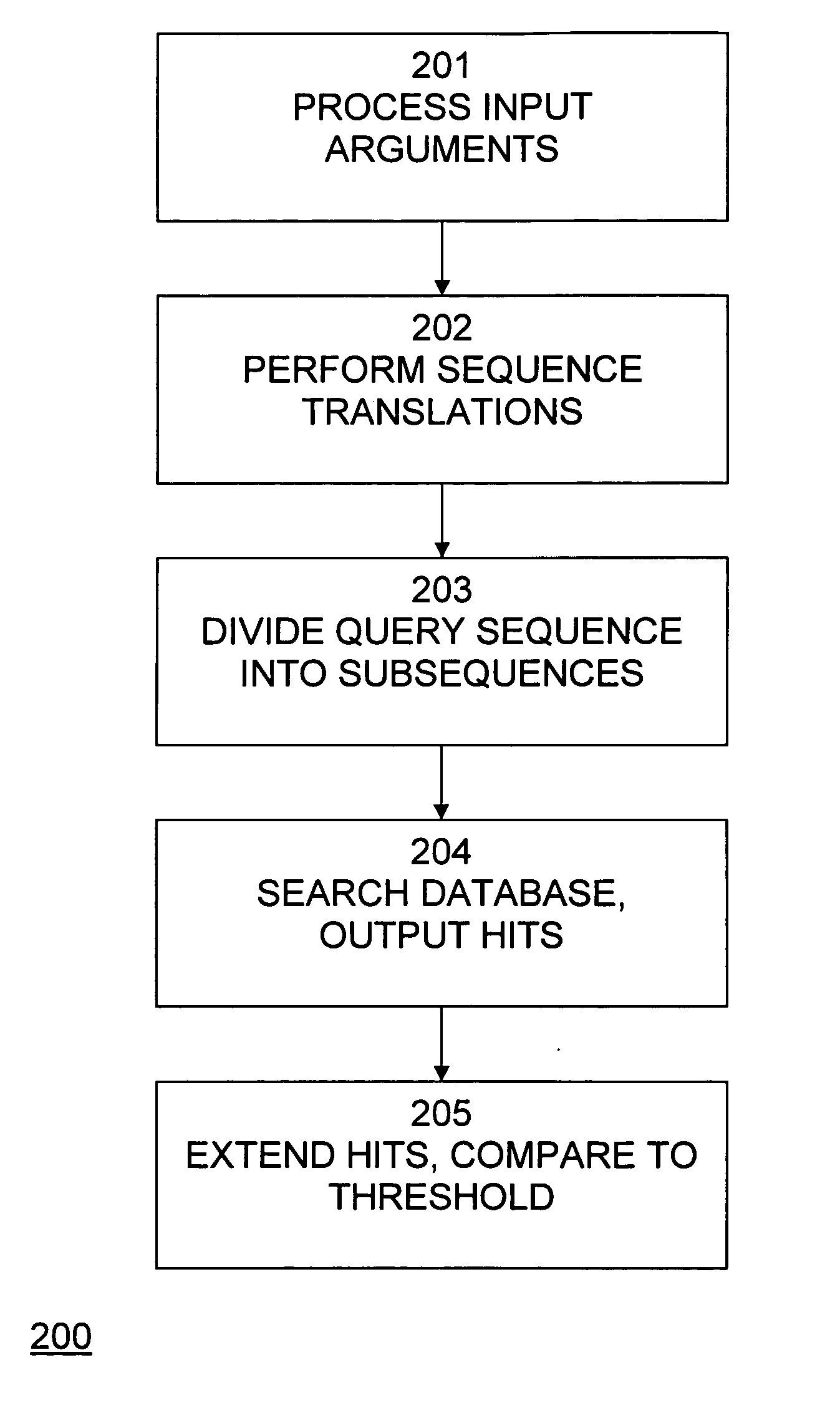System and method for sequence matching and alignment in a relational database management system
a database management system and database technology, applied in the field of system and method for sequence matching and alignment in the database management system, can solve the problems of performance problems, limit the scalability of such a solution, and the inability of dynamic programming algorithms to search large databases without the use of supercomputers or other special purpose hardwar
- Summary
- Abstract
- Description
- Claims
- Application Information
AI Technical Summary
Benefits of technology
Problems solved by technology
Method used
Image
Examples
Embodiment Construction
BLAST, developed by Altschul et al. in 1990, is a heuristic method to find the high scoring locally optimal alignments between a query sequence and a database [1]. BLAST focuses on no-gap alignments of a certain fixed length. The BLAST algorithm and family of programs rely on work on the statistics of un-gapped sequence alignments by Karlin and Altschul. The statistics allow the probability of obtaining an un-gapped alignment (also called MSP—Maximal Segment Pair) with a particular score to be estimated. The BLAST algorithm permits nearly all MSPs above a cutoff to be located efficiently in a database.
The algorithm operates in three steps: 1. For a given word length w (usually 3 for proteins and 11 for nucleotides) and a score matrix, a list of all words (w-mers) that can score greater than T (a score threshold), when compared to w-mers from the query is created. 2. The database is searched using the list of w-mers to find the corresponding w-mers in the database. These are calle...
PUM
 Login to View More
Login to View More Abstract
Description
Claims
Application Information
 Login to View More
Login to View More - R&D
- Intellectual Property
- Life Sciences
- Materials
- Tech Scout
- Unparalleled Data Quality
- Higher Quality Content
- 60% Fewer Hallucinations
Browse by: Latest US Patents, China's latest patents, Technical Efficacy Thesaurus, Application Domain, Technology Topic, Popular Technical Reports.
© 2025 PatSnap. All rights reserved.Legal|Privacy policy|Modern Slavery Act Transparency Statement|Sitemap|About US| Contact US: help@patsnap.com



